If you buy through our links, we may earn an affiliate commission. This supports our mission to get more people active and outside.Learn about Outside Online's affiliate link policy
The 6 Best Cross-Country Skis of 2026
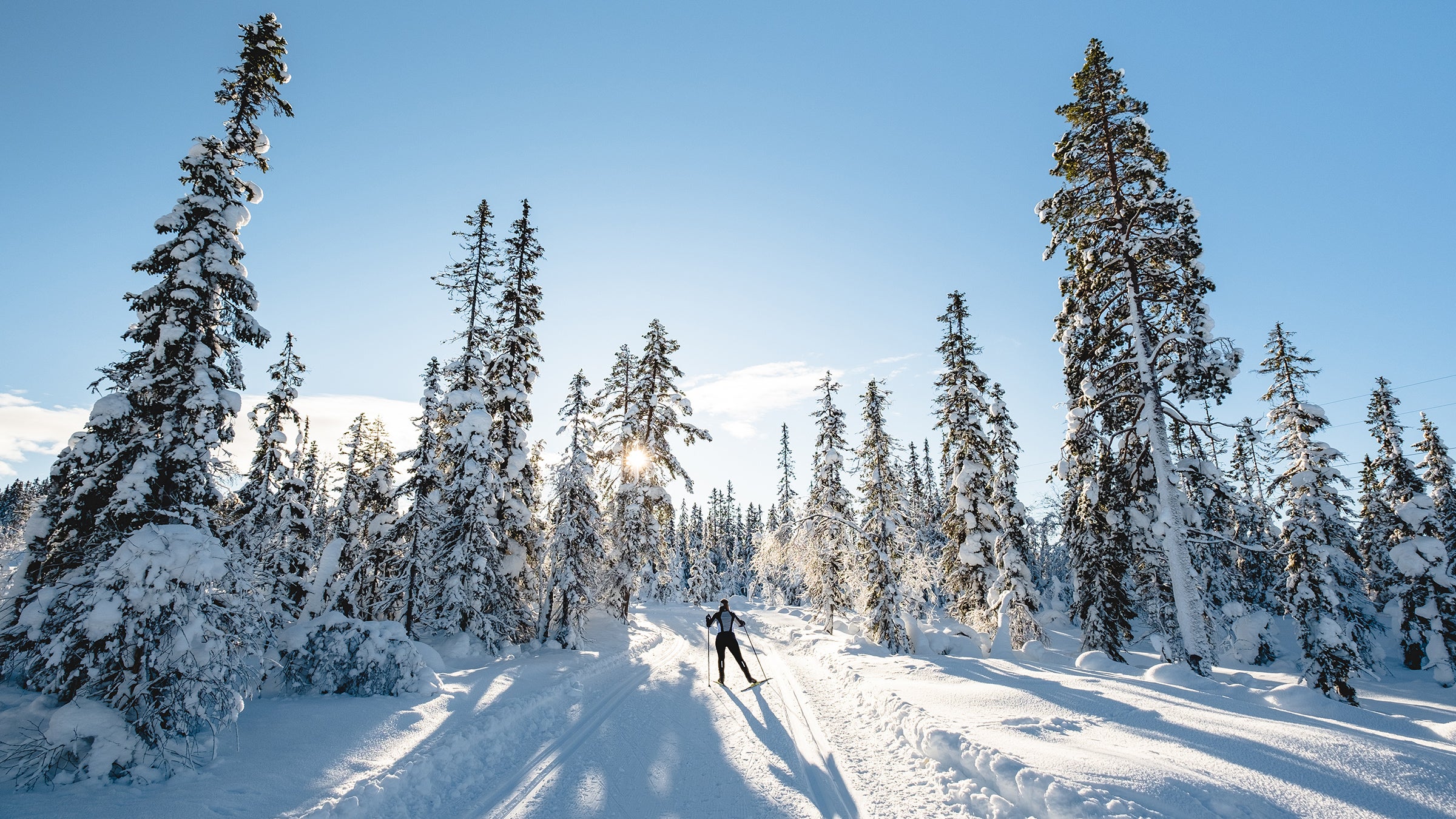
(Photo: Glenn Pettersen/Getty)
Table of Contents
Beyond talent, technical expertise, a superhuman VO2 max, and the ability to burrow into the deep abyss of their own personal pain caves, the world’s most elite skate skiers win because they have access to prototypes of the world’s fastest, lightest, and most aerodynamic skis—and a team dedicated to waxing them.
Most of us will likely never have a personal ski technician, but brands are making it easier to access the sport, namely by engineering skate skis that are more forgiving, more adaptable to a wider variety of snow conditions, and a whole lot more fun to ski, especially for those who may not have mastered Olympic-level skating technique (yet).
Skate skiing will never be easy—it takes endurance and time to learn skills needed to enjoy the sport. But people are catching on that it’s worth a try. Snowsports Industries America’s 2023-2024 Participation Study showed that of the 5.5 million cross-country skiers in the U.S., 1.9 million of them were new to the sport. (These numbers do not differentiate between classic and skate skiing.) Forty-six percent were under the age of 25—a percentage that has steadily grown over the past few years. If you’re tempted to try cross-country skiing, the time is now.
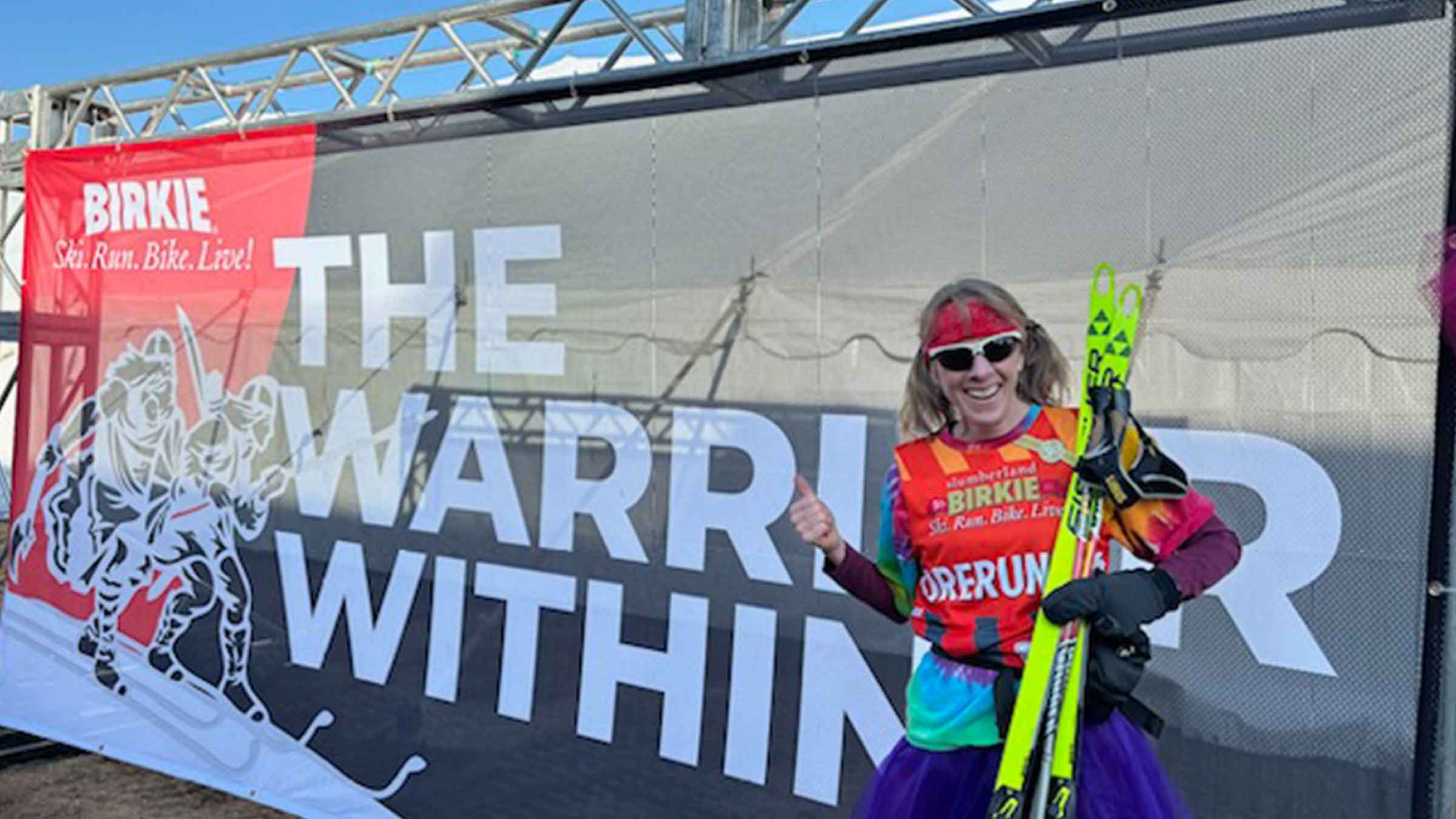
Best Cross-Country Skis: At a Glance
- Best Overall Race Skate Ski: Rossignol X-Ium Premium+ Skate SX ($800)
- Best Beginner Skate Ski: Fischer Aeroguide Skate 85 ($469)
- Lightest Race Skate Ski: Fischer Speedmax 100HE Skate Plus 610 ($800)
- Best Expert Classic Ski: Rossignol X-ium R-Skin ($500)
- Best Classic Ski for Off-Trail or Tracks: Salomon Outpath 65 ($395)
- Best Touring Ski: Fischer S-Bound 98 Crown/Dual-Skin XTRALITE ($449)
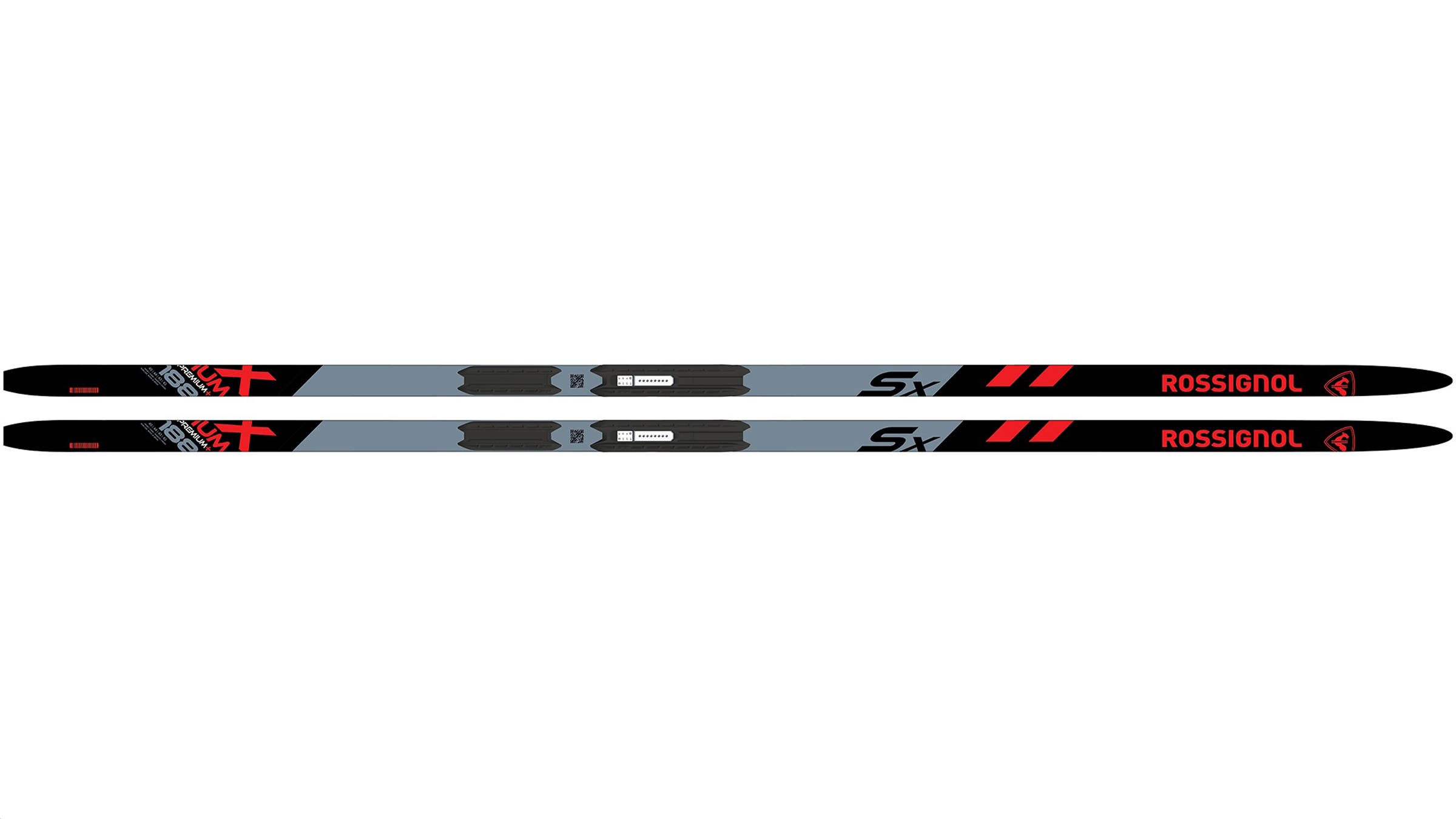
Best Overall Race Skate Ski
Rossignol X-Ium Premium+ Skate SX
Sidecut: 40/44/43/43
Weight: 173, 178, 183, 188, 193
Length: 1,040 g/188 cm (per pair)
Pros and Cons
⊕ Strong and explosive, yet stable
⊗ The front outer edge of the ski between the boot and tip felt slightly weighted when pushing off
Our testers’ overall favorite ski this year debuted during the 2024-2025 season, but it’s still getting World Cup skiers on top of podiums. Rossignol’s intent with the overhaul of their highest-end race ski was to keep it poppy and energetic—as their race skis are known to be—while simultaneously making it easier to ski, especially over long distances. To do that, Rossignol lowered the ski’s camber, softened the tips and tails, and adapted it for a wider variety of snow conditions. They also preserved previous design elements, like the double groove along its base, which keeps the ski track straight and adds torsional rigidity.
Built out of lightweight wood sidewalls, the ski’s core is Nomex honeycomb, a paper-like aramid (similar to what’s used in the aforementioned Fischer). On the top and bottom of the core is a high-modulus carbon layer. Unlike a lot of World-Cup-level skis, this one is capless, meaning that the topsheet does not roll over to form the sidewalls. The result is a ski that offers better acceleration, is less demanding, and saves energy, advantages that Gus Schumaker exploited while skiing on the X-Ium Premium+ SX to his first World Cup Victory in Minneapolis in 2024.
“I felt like I could really be explosive and strong without spending extra energy to make that happen,” wrote our tester after a day of testing in ten to 14 degrees on a hardpacked skate deck at hilly Lester Park in Duluth. “The word ‘playful’ ran through my head, like it is actually fun to ski these skis. I even started adding an occasional hop to my V2 a la Gus Schumacher because it just seemed so natural on these skis.”
Another tester, a former elite racer and longtime user of previous iterations of X-Ium skate skis, was impressed with the upgrades. “I love the springy feel and the responsiveness of these skies. They are less flat-feeling than other brands, light and easy for climbing hills, and stable on downhills as well as a well-packed track.”
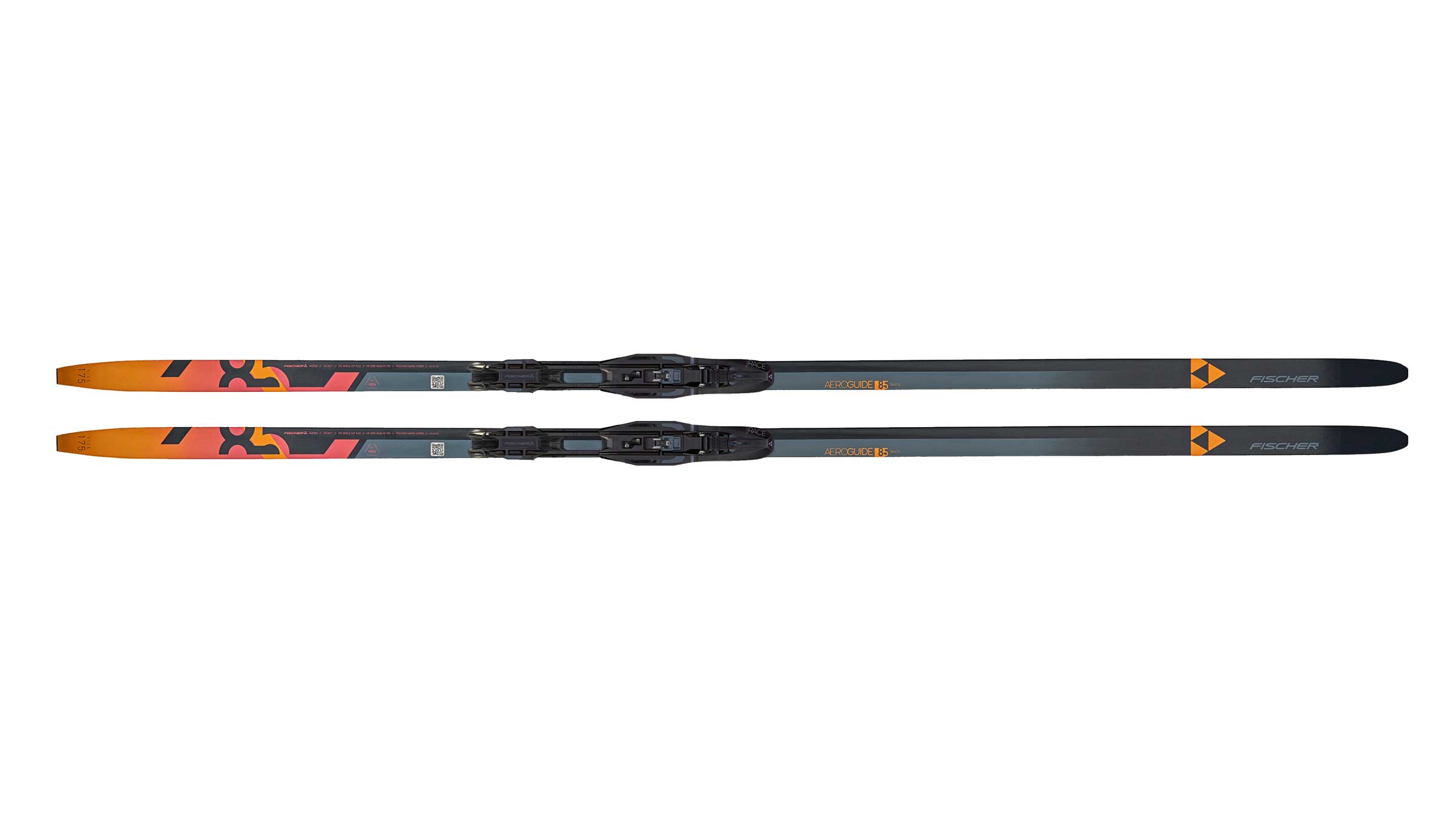
Best Beginner Skate Ski
Fischer Aeroguide Skate 85
Sidecut: 35-40-45
Weight: 1,200 g/175 cm ski (per pair)
Length: 165, 175, 185
Pros and Cons
⊕ Forgiving sidecut
⊗ Severe shape impacts technique
We threw every twist, turn, and cruddy ski condition at the five pairs of beginner skis we tested and came to a surprising conclusion—last year’s top pick couldn’t be beat. There are three design choices that make the Fischer Aeroguide an especially good fit for beginner skate skiers: First, it comes in three relatively short lengths—165, 175, and 185 centimeters—making it easier for beginners to control.
Next, the Aeroguide has a more aggressive, hourglass sidecut (43-40-45) than higher-level skis. For comparison, the sidecut on Fischer’s top-of-the-line Speedmax 100 HE Skate Plus is shaped like an arrow (41-44-44). That dramatic shape provides more grip on the edge, making it much easier to push off when initiating the weight transfer (something beginner skiers often struggle with.) Finally, the base has two vertical grooves down the length of the ski. The result? Beginner skate skiers find that they grip the snow and further increase stability and control when gliding.
At its base, the ski has a hollow wood core strengthened by basalt fibers that provide better flex characteristics in a wider range of temperatures than fiberglass. The ski is slightly heavier than intermediate and expert designs, but that also adds beginner-friendly stability. With a deeper, coarser base structure (thanks to a precision grinding process using the hardness of natural diamonds), the Aeroguide is easier to ski in warm, moist conditions—a good thing in a warming world.
Our tester, who started skate skiing in 1987 shortly after the technique was created, took the Aeroguide for a spin on 12 kilometers of fast laps on the hilly, freshly-groomed, manmade snow at Spirit Mountain Nordic Center in Duluth, Minnesota during a mild, mid-20s winter day. He was surprisingly impressed with the 185-centimeter length, which is seven centimeters shorter than what he normally skis because, in the case of this particular design, less ski meant more control, which allowed one tester to focus on his technique. Despite it being a few hundred grams heavier than the World Cup-level skate skis Hayden normally uses, he liked that its stability “gave me confidence to get out over my ski.”
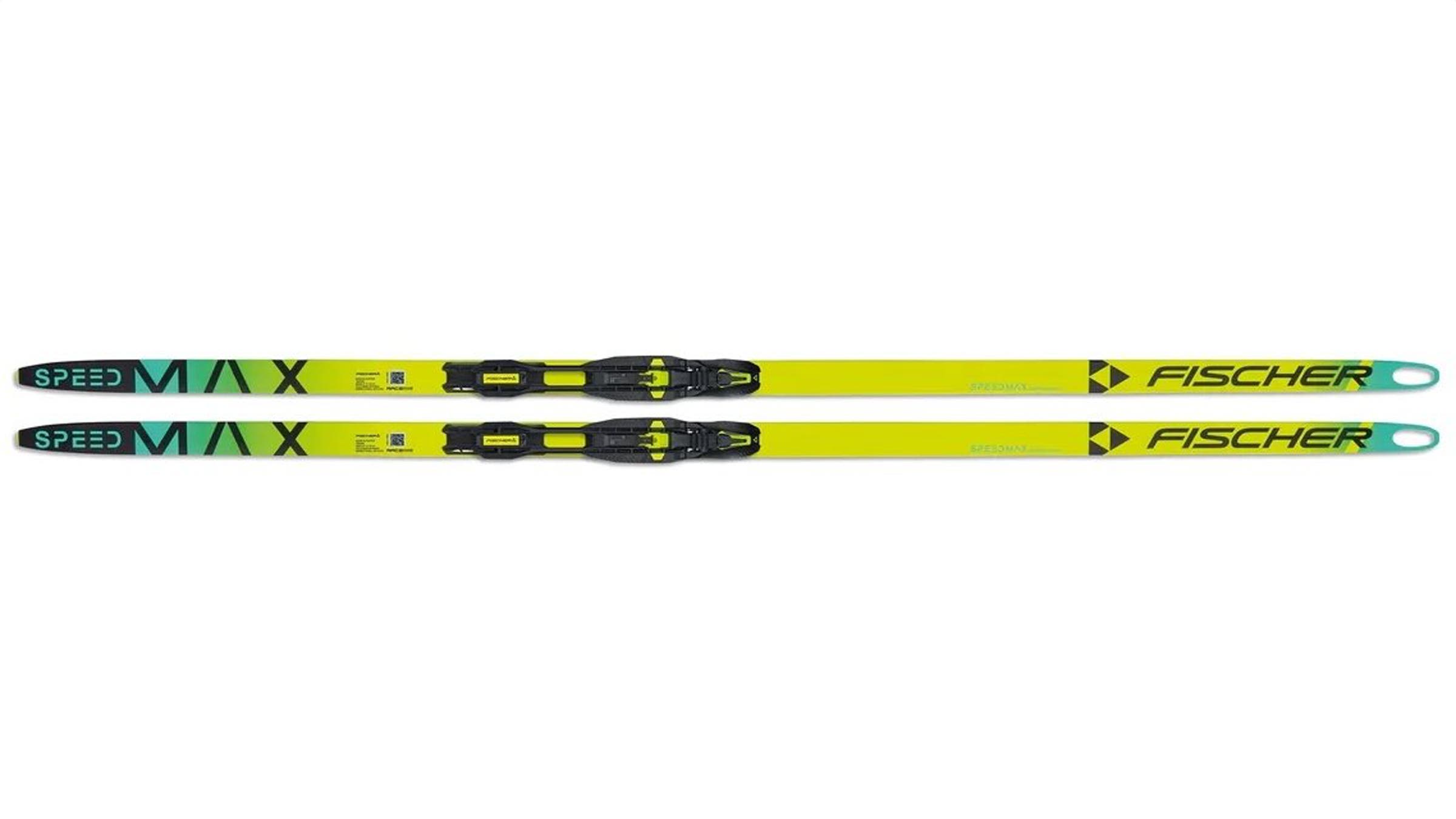
Best Lightweight Race Ski
Fischer Speedmax 100HE Skate Plus 610
Sidecut: 41-44-44
Weight: 950 g/186 cm (per pair)
Length: 171,176,181,186,191
Pros and Cons
⊕ Incredible for climbing
⊕ Feels stable and responsive even on firm trails
⊗ So light that it feels less stable on downhills than other skis we tested
A single ski in Fischer’s lightest, next generation Speedmax line weighs less than a loaf of Wonder Bread—so light that testers Patti Harvieux and Jen Pearson referred to them as their “bedroom slippers.” How can a ski be simultaneously featherweight yet strong enough to withstand the rigors of racing for a World Cup podium? It starts with the ski’s bidirectional design. Lining the poplar and ash sidewalls are a honeycomb construction that lies perpendicular to the ski’s central “Air Core.” This central core is made of aramids, a paper-like material composed of manmade synthetics, that runs down the length of the ski. Above and below the Air Core are laminates of high modulus carbon. All this is capped by a “Helium Shield,” a carbon and glass-fiber laminate. Together, these technologies create maximal torsional stability and performance while shaving grams off the ski.
The 610 in the name indicates the 100HE’s mold, or how it dissipates the skier’s weight. The 610 mold is universal in that it skis fast in most conditions, while the alternative 61K mold is slightly faster in softer conditions. The 100HE Skate Plus 610 comes in Medium, Stiff, and Extra Stiff, all of which work best in temperatures higher than 14 degrees Fahrenheit. If you live in a climate like northern Minnesota, however, the 100HE Skate 610 also comes in a “Cold” version that’s optimal in conditions below 14 degrees Fahrenheit.
Other design elements unique to Fischer’s Speedmax series are its lower, shorter, and hollowed-out tip that keeps the skis’ swingweight to a minimum, and a thin sidewall made of base material that can be waxed, which reduces friction and optimizes speed. All Speedmax-level skis have “cold base bonding,” meaning that the base is bonded to the ski without applying heat. (Applying no heat during construction creates a more virginal base that holds wax better and glides faster than bases that undergo high heat.)
“These are insanely light,” added tester Brian Hayden after an early spring ski at Boulder Lake Ski Trails north of Duluth. “They are very stable, easy to glide on a single ski, and I love them on the climbs—they are so easy to accelerate with quick steps on steeper hills.”
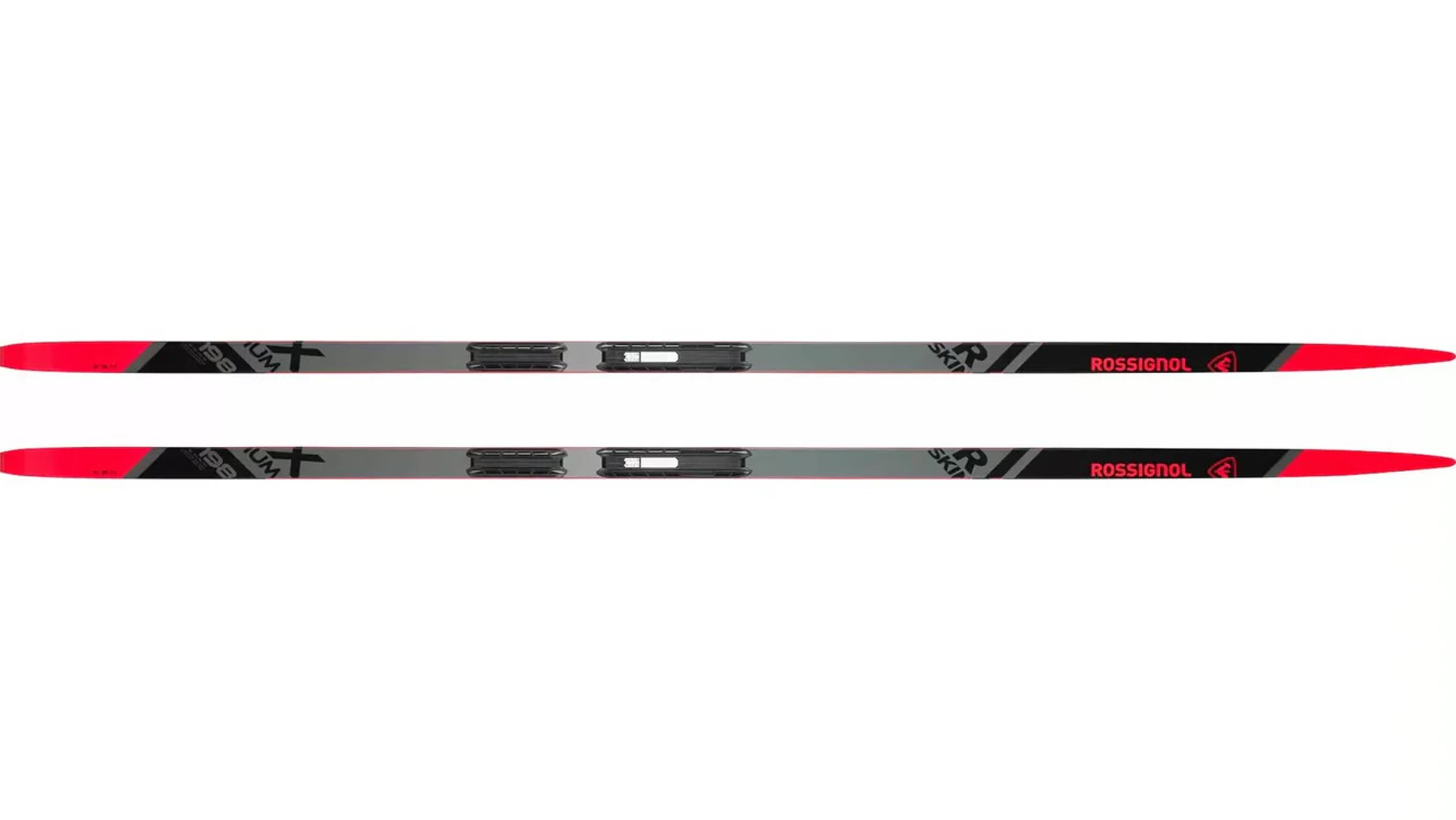
Best Expert Classic Ski
Rossignol X-ium R-Skin
Sidecut: 40-44-44
Weight: 550 g/198 cm per ski
Lengths: 186, 191, 198, 203, 208 cm
Pros and Cons
⊕ An ultralightweight ski fast enough for racing, without the hassle of waxing
⊗ If weight isn’t transferred correctly on the stride, even the mohair skins can’t stop the classic ski from backsliding
The first version of this ski was born around 2016 when Rossignol manufactured about 4,000 pairs of its first iteration of the X-ium R-Skin. In the near decade since, Rossignol has tinkered with the skin ski’s camber shapes and profiles, internal construction, grind patterns, and skin shapes and placements to create the universally beloved X-ium R- Skin.
Like the Salomon S-Lab Universal Skate, the X-ium R Skin’s core is made from Nomex Honeycomb, a structure that offers ultra-lightweight precision and powerful energy transmission. The core is covered in a fiberglass “cap,” a continuous cover that extends from one sidewall over the top sheet and onto the other sidewall. The result is a ski that offers both torsional rigidity and supple flex in the tips and tails, making for a smooth and stiff ride.
This year Rossignol removed the shiny varnish from the ski, which had both intended and unintended results. The varnish contained chemicals that factory workers could have breathed in, so now the ski is more eco- and health-friendly without it. The other bonus: Varnish created a stiff outer coat which affected the tension on the ski. Without it, the ski is slightly lighter and flexes more smoothly, which puts less pressure on the tips and tails when weighted, making the ski easier to kick (and much more fun.)
Our Jackson, Wyoming-based tester Adam Meyer found that while Rossignol’s cosmetic change to the X-ium R-Skin weren’t “trying to reinvent the world of skin skis,” the ski was a blast in multiple conditions. Meyer said that it maintained the classic Rossignol responsiveness, while remaining stable when kicking and gliding thanks to its generous mohair skin. As Meyer reported: “the ski did its job well.”
Overall, this is an expert-level classic ski that’s fun and fast enough to place on the podium.
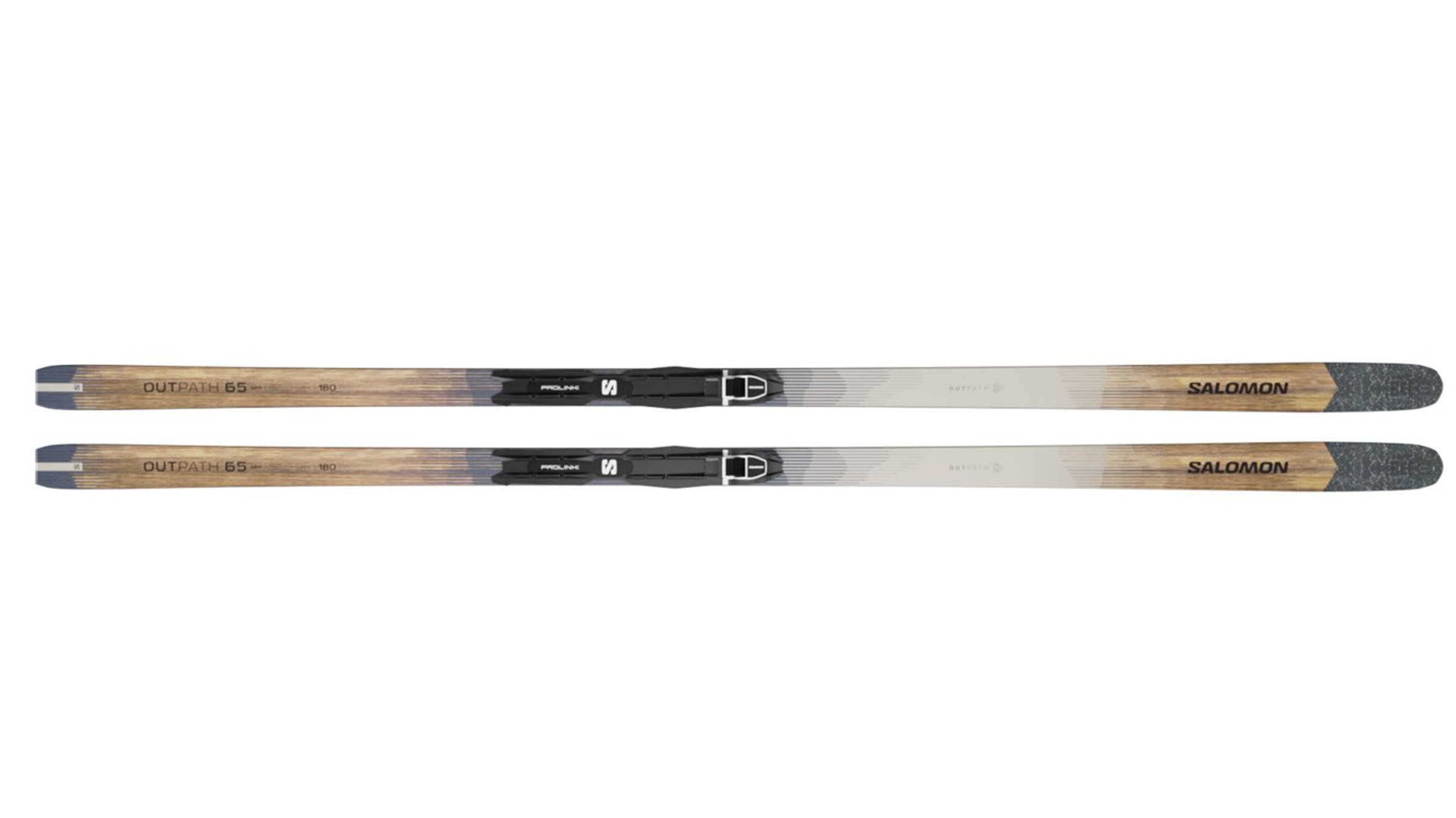
Best Classic Ski for Off-Trail or Tracks
Salomon Outpath 65
Sidecut: 65-55-60
Weight: 1080 g/ski
Lengths: 180, 195 cm
Pros and Cons
⊕ Adept in tracks or out
⊕ Easy to turn
⊗ Too narrow for deep snow
The Salomon Outpath 65 is the ski that testers fought to claim—because whether they were climbing or descending, gliding in tracks or blazing a path through ungroomed snow, it made them feel like superheroes. “It’s very easy to turn and maneuver,” one reported after logging a seven-hour day on these in central Maine. “But it’s also very stable and forgiving, inspiring me to feel confident about increasing my speed and improving my form.”
The scaled base provides a rave-worthy grip on cold, midwinter snow. And its three-quarter-length metal edges bite into hardpack (a feature testers appreciated when venturing beyond groomed tracks). Although the ski’s 65mm tip doesn’t provide enough flotation to effectively break trail through deep powder, it did let one skier explore a trailless summit covered in an 8-inch blanket of freshies.
Testers also praised the camber’s energetic spring, which doesn’t require expert skills to harness but does yield a big fun factor when gliding over rolling terrain and set tracks. Overall, the Outpath appeals to beginners and intermediates who want a ski that unlocks their potential and maximizes enjoyment.
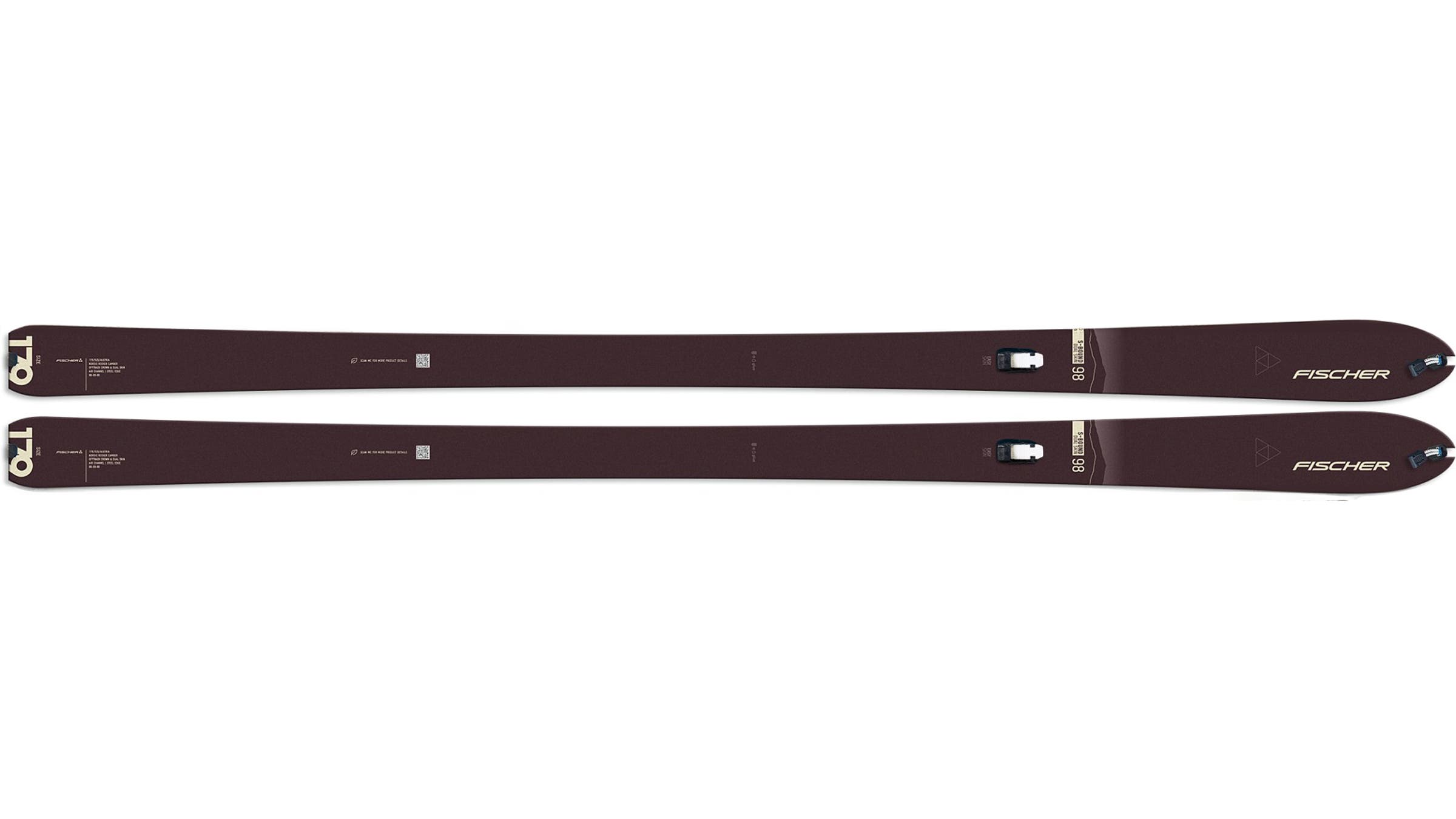
Best Touring Ski
Fischer S-Bound 98 Crown/ Dual-Skin XTRALITE
$449 at Pioneer Midwest
Sidecut: 98-69-88
Weight: 2,200 g/179 cm per ski
Lengths: 159, 169, 179, 189 cm
Pros and Cons
⊕ Fun and light
⊕ Grips well on steep uphills
⊗ Not enough heft to cut through heavy powder
The appeal of the S-Bound 98 Crown, a lightweight backcountry touring ski, is its adaptable performance across an impressively wide range of conditions. Slick spring crust? Soft, deep powder? Boilerplate hardpack? This ski handled these conditions and more, making it winningly versatile and light enough for high-mileage explorations.
Its lightweight paulownia wood and fiberglass core has hollow air channels throughout. Not only does the fiberglass reinforcement make the ski stronger than one with a solid wood core, but the air chambers distribute pressure better, too. A rockered tip preserves the ski’s underfoot camber while also floating to the surface and facilitating turns in deep, untracked snow. On our testing trip near Maine’s Medawisla Hut, narrow steel edges helped one novice skier feel confident on smooth, groomed descents, while the wide tips provided good flotation in 18 inches of freshies.
One tester was especially impressed with how the skis’ fish-scale base gripped while skiing uphill on boilerplate hardpack at her local alpine area in Duluth, even without a skin. Should you need more traction on crusted corn or icy steeps though, Fischer’s two mohair and nylon skins—the short “Easy Skin” or the full-length “Super Skin”— are compatible with this ski.
How To Choose the Best Cross-Country Skis
First, figure out the kind of skate ski you need. Skate skis generally fall under three categories: beginner, endurance, and race. Each category is self-explanatory, but it can get confusing when companies break skis into niche sub-categories. The most elite ski in any line is a World Cup ski that pros use (and test) on the World Cup tour, often the year before it becomes available to consumers. These are Ferrari fast, but they also require the best technique to ski.
It’s always wise to cast a wide net while researching the best skate skis for you. Nordic skiing is enough of a niche sport that there are only a few major brands available in the U.S., such as Fischer, Rossignol, Madshus, Salomon, Atomic, and Peltonen. Research each brand and their respective skate ski models online; peruse the gear section on sites like Skinnyski.com; and visit major respected online retailers like Gear West.
But there’s still no substitute for testing the ski. All brands make quality skis, but each one feels different underfoot depending on the ski’s flex, its stiffness, the snow conditions, the temperature of the snow, and the skier’s weight, height, and ability. If you live in a part of the country that hosts ski festivals or races, plan to attend, even if you don’t plan to race, in order to try out skis offered in the demo booths. Also, stop at your local ski shop and talk to the Nordic manager who knows each brand well enough to steer you toward a model that will work best for you.
How We Test the Best Cross-Country Skis
- Number of Testers: 4
- Number of Products Tested: 25
- Number of Kilometers Skied: 867
- Number of American Birkiebieners completed: Three this year, almost 50 total
- Number of Hip Replacements Required After the Season Ended: 1
Every year is a little different depending on snow conditions, the number of skis made available to us by the manufacturers, and the number of skis that will debut the following year. Nordic ski manufacturers almost never debut beginner, intermediate, and elite-level skis all in the same year—most keep a ski in their lineup for at least two to three years before making major design changes.
Once we know the number of skis we’ll have available to test, we recruit our testers. This year we tested skate skis from beginner to elite level and chose four testers, ranging from advanced intermediate to elite skier. Next, we sent the exact heights and weights of each tester to manufacturers, and each brand shipped testers models with the appropriate length, stiffness, and temperature.
Then came the fun part: hitting the trail whenever possible. This year, all of our testers were based in the Midwest. One general rule of thumb is that we always test in pairs, so that two skiers can compare notes on the same ski in the same terrain, temperature, and conditions. We tested for nearly three months from the end of January through the end of March (although we let some of our testers recover from the American Birkebeiner within that timeframe).
Meet Our Testers
Category manager Stephanie Pearson grew up in Duluth, Minnesota, cross-country skiing out her backyard. She started at Outside as an intern in 1995 and has worked on staff and as a contributing editor for three decades. She is also a National Geographic Explorer.
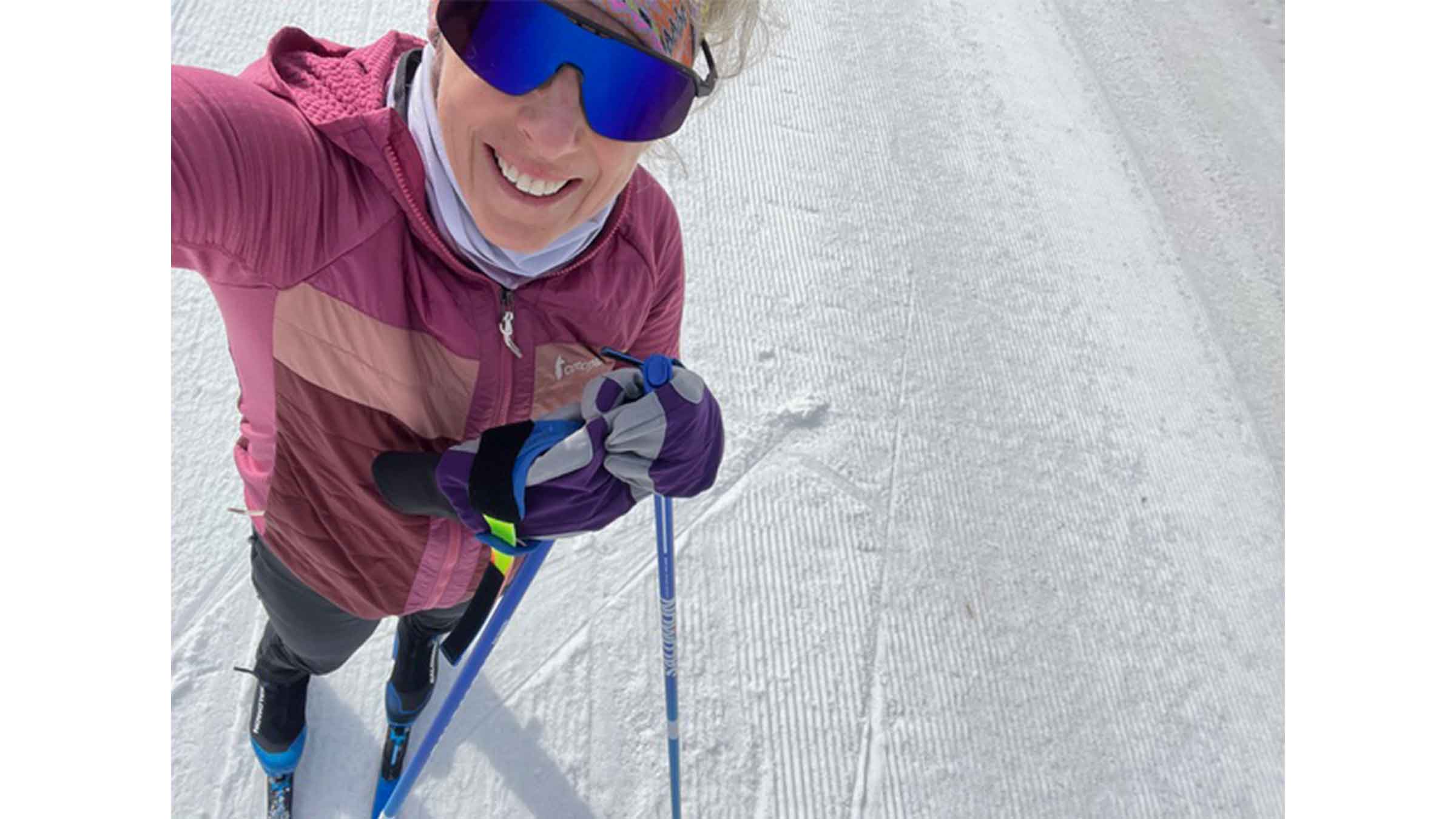
Kelly Bastone moved to the Colorado Rockies in 1998 and has pursued outdoor sports ever since. A freelancer who writes about gear and other outdoor topics for publications such as Backpacker, AFAR, and The Red Bulletin, Bastone has contributed many gear reviews to Outside over the years. An avid skier (resort, Nordic, and backcountry), fly-fisher, mountain biker, and mushroom forager, she gets the news she needs from the weather report.